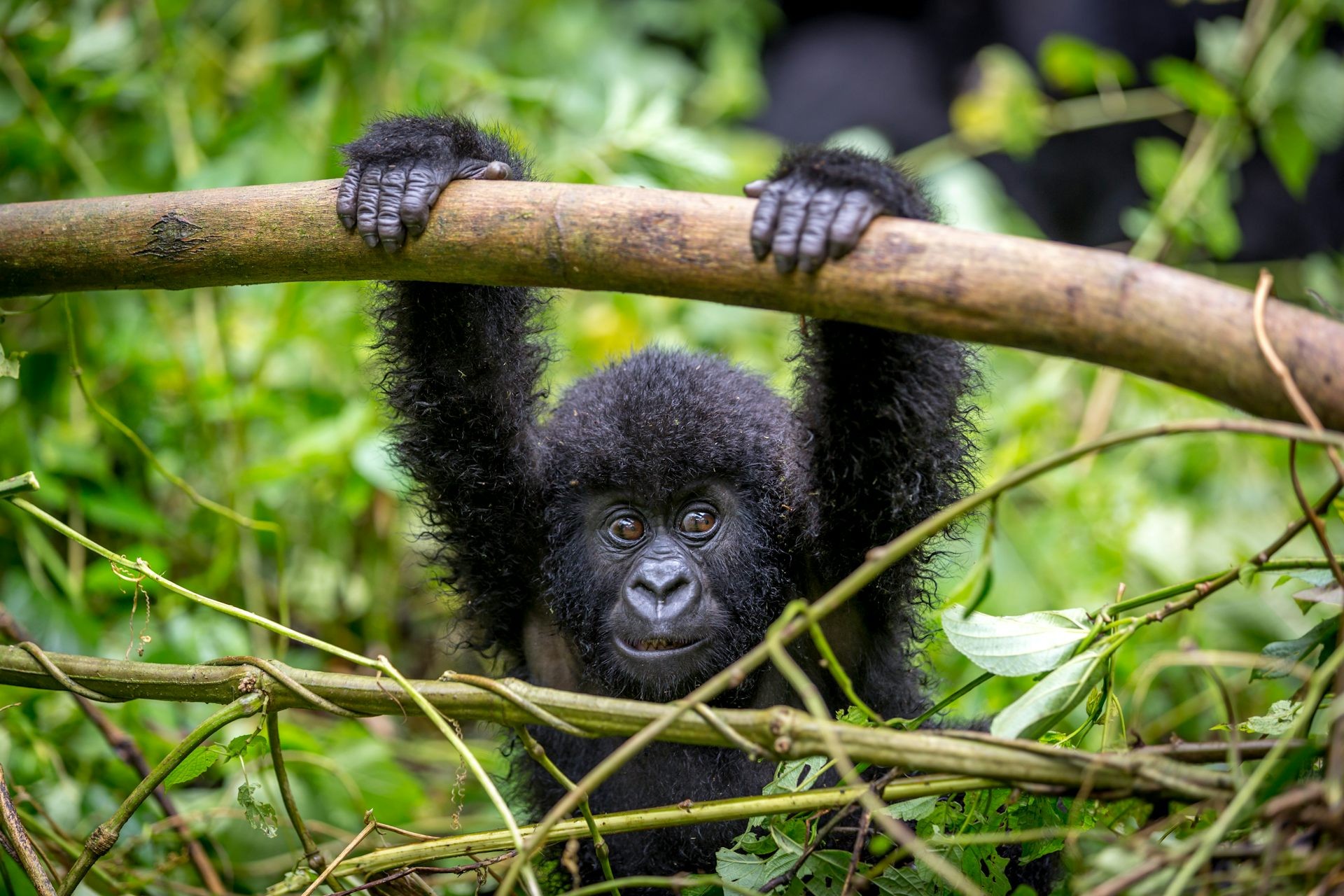Why Do Humans Need Fingernails? Fingernails, those seemingly small features on our fingers, play a much more significant role than just being a canvas for nail polish; they are essential for various functions, from gripping objects to protecting our sensitive fingertips, and at WHY.EDU.VN we aim to explore this topic in depth. Let’s delve into the evolutionary history, practical benefits, and potential health indicators associated with these unique structures, including nail anatomy and keratin production.
1. The Evolutionary Basis: Why Fingernails Matter
Our fingernails are not merely decorative; they are a testament to our evolutionary journey. Understanding their development provides valuable insights into the necessity of these structures.
1.1 From Claws to Nails: An Evolutionary Transition
The transition from claws to nails represents a significant shift in primate evolution.
| Feature | Claws | Nails |
|---|---|---|
| Shape | Thin, curved, and pointed | Wide, flat, and shield-shaped |
| Function | Digging, climbing, and defense | Fine manipulation, grasping, protection |
| Adaptability | Suited for specific environmental tasks | Versatile for diverse activities |


This change allowed our ancestors to develop enhanced dexterity and fine motor skills. According to a study published in the Journal of Human Evolution, the development of nails coincided with the increasing need for precise manipulation in early hominids.
1.2 The Primate Connection: A Shared Trait
Humans share the trait of having nails with other primates, such as apes and monkeys. These nails serve similar purposes in these species.
- Grasping: Primates use their nails to enhance their grip on branches and objects.
- Manipulation: Nails aid in tasks like grooming and foraging for food.
- Protection: Nails protect the sensitive tips of fingers and toes from injury.
As noted in Primate Anatomy: An Introduction, “The presence of nails across various primate species underscores their importance in facilitating arboreal locomotion and manipulative tasks.”
2. The Functional Advantages: How Fingernails Help Us
Fingernails provide several practical benefits that significantly enhance our daily lives.
2.1 Enhancing Grip and Dexterity
Fingernails offer a rigid backing that improves our grip, making it easier to pick up objects. This function is crucial for tasks requiring fine motor skills.
- Picking up small objects: Nails allow us to grasp tiny items like pins or coins.
- Tool use: They provide the necessary support for using tools effectively.
- Improved tactile feedback: Nails enhance our ability to sense textures and shapes.
Research in the Journal of Neurophysiology indicates that the presence of fingernails significantly improves tactile sensitivity and grip strength.
2.2 Protection of Fingertips
Fingernails protect the sensitive nerve endings in our fingertips from injury.
- Physical barrier: They act as a shield against blunt force and impact.
- Prevention of cuts and abrasions: Nails reduce the risk of skin damage.
- Support for soft tissue: They provide structural support, preventing deformation of the fingertip.
According to the American Academy of Dermatology, “Fingernails protect the underlying tissues and structures of the fingers from trauma.”
2.3 Aid in Manipulation and Tool Use
Fingernails are essential for various manipulative tasks and tool use.
- Peeling and separating: Nails help in tasks like peeling fruits or separating pages in a book.
- Scratching and scraping: They aid in removing unwanted substances from surfaces.
- Detailed work: Fingernails provide the necessary precision for intricate tasks.
A study in the American Journal of Physical Anthropology highlights that the morphology of human nails is optimized for precise manipulation and tool use.
3. The Anatomy of Fingernails: Understanding the Structure
To fully appreciate the function of fingernails, it’s essential to understand their anatomy.
3.1 Key Components of a Fingernail
A fingernail consists of several key parts:
- Nail Plate: The visible part of the nail, made of keratin.
- Nail Bed: The skin beneath the nail plate.
- Lunula: The white, crescent-shaped area at the base of the nail.
- Cuticle: The skin that overlaps and protects the base of the nail.
- Nail Matrix: The area beneath the cuticle where nail growth begins.
Understanding these components helps in appreciating how nails grow and function.
3.2 The Role of Keratin: The Building Block
Keratin is a protein that forms the main structural component of nails.
- Strength and durability: Keratin provides the nail with its hardness and resistance to damage.
- Protection: It protects the underlying tissues from injury and infection.
- Growth: Keratinocytes in the nail matrix produce new cells, pushing older cells forward to form the nail plate.
According to a report by the National Institutes of Health, “Keratin is essential for the structural integrity and protective functions of the nail.”
4. Fingernails as Health Indicators: What They Reveal
Fingernails can provide valuable insights into our overall health. Changes in nail appearance can indicate underlying medical conditions.
4.1 Common Nail Abnormalities and What They Signify
Various nail abnormalities can signal health issues:
| Abnormality | Possible Condition | Description |
|---|---|---|
| Beau’s Lines | Systemic illness, chemotherapy | Horizontal depressions across the nail |
| Clubbing | Lung disease, heart disease | Enlargement of the fingertips and curving of the nails |
| Koilonychia | Iron deficiency anemia | Spoon-shaped nails |
| Onycholysis | Thyroid disease, psoriasis | Separation of the nail from the nail bed |
| Pitting | Psoriasis | Small depressions or pits on the nail surface |
| Terry’s Nails | Liver disease, congestive heart failure, diabetes | White nails with a narrow band of pink at the tip |
| Yellow Nail Syndrome | Respiratory conditions, lymphedema, thyroid disorders | Yellowing and thickening of the nails, often with slowed growth |
These changes in nail appearance can be crucial clues for diagnosing underlying health conditions.
4.2 When to Seek Medical Attention
It’s important to consult a healthcare professional if you notice significant changes in your nails, especially if accompanied by other symptoms.
- Sudden changes in nail color or thickness: These could indicate infection or systemic disease.
- Nail pain or swelling: This may signify an infection or injury.
- Bleeding around the nails: This could be a sign of trauma or a more serious condition.
- Nail separation from the nail bed: This could be due to infection, injury, or underlying disease.
Early detection and treatment of nail abnormalities can prevent more serious health complications.
5. Proper Nail Care: Maintaining Healthy Fingernails
Proper nail care is essential for maintaining healthy fingernails and preventing issues.
5.1 Basic Nail Hygiene Practices
Good nail hygiene includes:
- Keeping nails clean and dry: This helps prevent bacterial and fungal infections.
- Trimming nails regularly: Use sharp clippers or scissors to trim nails straight across, then round the tips gently.
- Moisturizing nails and cuticles: This prevents dryness and cracking.
- Avoiding harsh chemicals: Limit exposure to nail polish remover and other chemicals that can damage nails.
Following these practices can help keep your nails healthy and strong.
5.2 Common Mistakes to Avoid
Certain habits can harm your nails:
- Biting nails: This can damage the nail bed and increase the risk of infection.
- Picking at cuticles: This can lead to inflammation and infection.
- Using nails as tools: This can cause breakage and damage.
- Wearing artificial nails for extended periods: This can weaken the natural nail.
Avoiding these mistakes can help maintain the health and integrity of your nails.
6. Fingernails in Culture and Fashion: More Than Just Function
Beyond their functional roles, fingernails also hold cultural and aesthetic significance.
6.1 Historical Significance
Throughout history, nail care and decoration have been practiced in various cultures.
- Ancient civilizations: Egyptians, Chinese, and Babylonians used nail polish and adornments to signify social status and beauty.
- Symbolism: In some cultures, long nails were a symbol of wealth and leisure, as they indicated that a person did not need to perform manual labor.
- Traditional practices: Certain nail care rituals were associated with religious or spiritual beliefs.
Nails have long been a canvas for self-expression and cultural identity.
6.2 The Modern Nail Industry
Today, the nail industry is a multi-billion dollar business.
- Nail salons: Provide a wide range of services, including manicures, pedicures, and artificial nail applications.
- Nail products: Include nail polish, nail art supplies, and nail care treatments.
- Trends: Nail trends and styles evolve rapidly, influenced by fashion, art, and popular culture.
The modern nail industry reflects the continued importance of nails in personal grooming and aesthetic expression.
7. Addressing Common Concerns: Debunking Myths About Fingernails
There are several myths and misconceptions about fingernails.
7.1 Common Myths About Fingernails
- Myth: Fingernails continue to grow after death.
- Fact: This is not true. The appearance of growth is due to the skin around the nails retracting as the body dehydrates.
- Myth: White spots on nails indicate calcium deficiency.
- Fact: White spots are usually caused by minor injuries to the nail matrix.
- Myth: Cutting cuticles is necessary for nail health.
- Fact: Cutting cuticles can increase the risk of infection. It’s better to push them back gently.
Debunking these myths helps promote informed nail care practices.
7.2 Seeking Professional Advice
If you have concerns about your nail health, consulting a dermatologist or podiatrist is advisable. These professionals can provide accurate diagnoses and recommend appropriate treatments.
8. The Future of Nail Research: Emerging Trends
Nail research continues to evolve, with emerging trends focused on understanding nail growth, health, and disease.
8.1 Advanced Treatments and Technologies
- Laser therapy: Used for treating fungal infections and other nail disorders.
- Regenerative medicine: Exploring methods to stimulate nail growth and repair damaged nail tissue.
- Drug delivery systems: Developing topical treatments that can effectively penetrate the nail plate.
These advancements hold promise for improving nail health and addressing challenging nail conditions.
8.2 Potential for Diagnostic Tools
- Nail biopsies: Used to diagnose nail disorders and systemic diseases.
- Non-invasive imaging techniques: Developing methods to visualize nail structures and detect abnormalities without invasive procedures.
- Biomarker analysis: Identifying specific molecules in nails that can indicate health status.
These diagnostic tools could revolutionize the way we assess and manage nail-related health issues.
9. Fingernails and Sensory Perception: The Connection
Fingernails play a role in sensory perception, enhancing our ability to feel and interact with the world around us.
9.1 How Nails Affect Tactile Sensitivity
Nails provide a rigid backing to the fingertips, which enhances the sensitivity of touch receptors in the skin.
- Amplification of touch: Nails amplify the sensation of touch, making us more aware of textures and shapes.
- Improved grip: The enhanced tactile feedback allows us to adjust our grip and manipulation of objects more precisely.
- Fine motor skills: The connection between nails and sensory perception is crucial for performing tasks that require fine motor skills.
Research in the Journal of Neuroscience has shown that individuals with intact nails have significantly better tactile discrimination compared to those without nails.
9.2 The Impact on Daily Activities
The enhanced tactile sensitivity provided by nails has a significant impact on various daily activities.
- Typing: Nails allow us to feel the keys on a keyboard and type accurately.
- Playing musical instruments: Fingernails are essential for musicians who play stringed instruments, as they provide the necessary feedback for precise finger placement.
- Everyday tasks: Simple tasks like buttoning a shirt or picking up small objects become easier with the added tactile sensitivity.
10. Why Fingernails Matter: A Summary of Their Importance
Fingernails are not merely decorative appendages; they are essential structures that play a crucial role in our lives.
10.1 The Multi-Functional Nature of Fingernails
- Protection: They protect the sensitive nerve endings in our fingertips.
- Grip and Dexterity: They enhance our grip and ability to manipulate objects.
- Sensory Perception: They improve our tactile sensitivity.
- Health Indicators: They can provide clues about our overall health.
- Cultural Significance: They hold cultural and aesthetic importance.
10.2 The Value of Fingernails in Our Daily Lives
From performing simple tasks to expressing our personal style, fingernails contribute to our overall well-being and quality of life. Their presence is a testament to our evolutionary journey and their continued importance in our daily existence.
In conclusion, understanding why humans need fingernails reveals their multifaceted roles in our lives. From their evolutionary origins and functional benefits to their significance as health indicators and cultural symbols, fingernails are far more than just hard plates on our fingertips. They are essential structures that enhance our grip, protect our fingers, and provide valuable insights into our overall health.
Do you have more questions about fingernails or other topics? Visit WHY.EDU.VN at 101 Curiosity Lane, Answer Town, CA 90210, United States or contact us via Whatsapp at +1 (213) 555-0101. At WHY.EDU.VN, our experts are ready to provide detailed, reliable answers to all your questions. Don’t hesitate to reach out and explore the world of knowledge with us.
FAQ: Common Questions About Fingernails
Here are some frequently asked questions about fingernails:
-
Why do fingernails grow faster than toenails?
Fingernails generally grow faster because they receive more blood flow and are subjected to more trauma, which stimulates growth. -
What causes ridges on fingernails?
Vertical ridges are usually a normal part of aging, while horizontal ridges (Beau’s lines) can indicate systemic illness or injury. -
How can I strengthen my fingernails?
Keep your nails moisturized, avoid harsh chemicals, and maintain a healthy diet rich in vitamins and minerals. -
Are artificial nails bad for my natural nails?
Artificial nails can weaken natural nails if applied or removed improperly. It’s important to choose a reputable salon and follow proper aftercare. -
Can nail polish damage my nails?
Some nail polishes contain chemicals that can dry out or weaken nails. Look for non-toxic, formaldehyde-free formulas and use a base coat to protect your nails. -
What is the white part at the base of the nail called?
The white, crescent-shaped area at the base of the nail is called the lunula. -
Why do my nails break easily?
Brittle nails can be caused by dryness, exposure to harsh chemicals, or underlying health conditions. -
How often should I trim my nails?
Trim your nails every 1-2 weeks, or as needed to maintain a comfortable length. -
What do different nail colors signify in terms of health?
Changes in nail color can indicate various health issues, such as yellowing (fungal infection or respiratory conditions), white nails (liver disease), or blue nails (poor circulation). -
Can stress affect my nails?
Yes, chronic stress can affect nail growth and lead to conditions like Beau’s lines or nail biting.
Explore More at WHY.EDU.VN
At WHY.EDU.VN, we’re dedicated to providing clear and reliable answers to all your questions. Whether you’re curious about the science of fingernails or any other topic, our team of experts is here to help. Visit our website or contact us today to discover more! You can find us at 101 Curiosity Lane, Answer Town, CA 90210, United States, or reach us via Whatsapp at +1 (213) 555-0101. Let WHY.EDU.VN be your trusted source for knowledge and exploration.
Remember, at why.edu.vn, we are committed to answering the questions that matter most to you. Join our community and embark on a journey of discovery.

